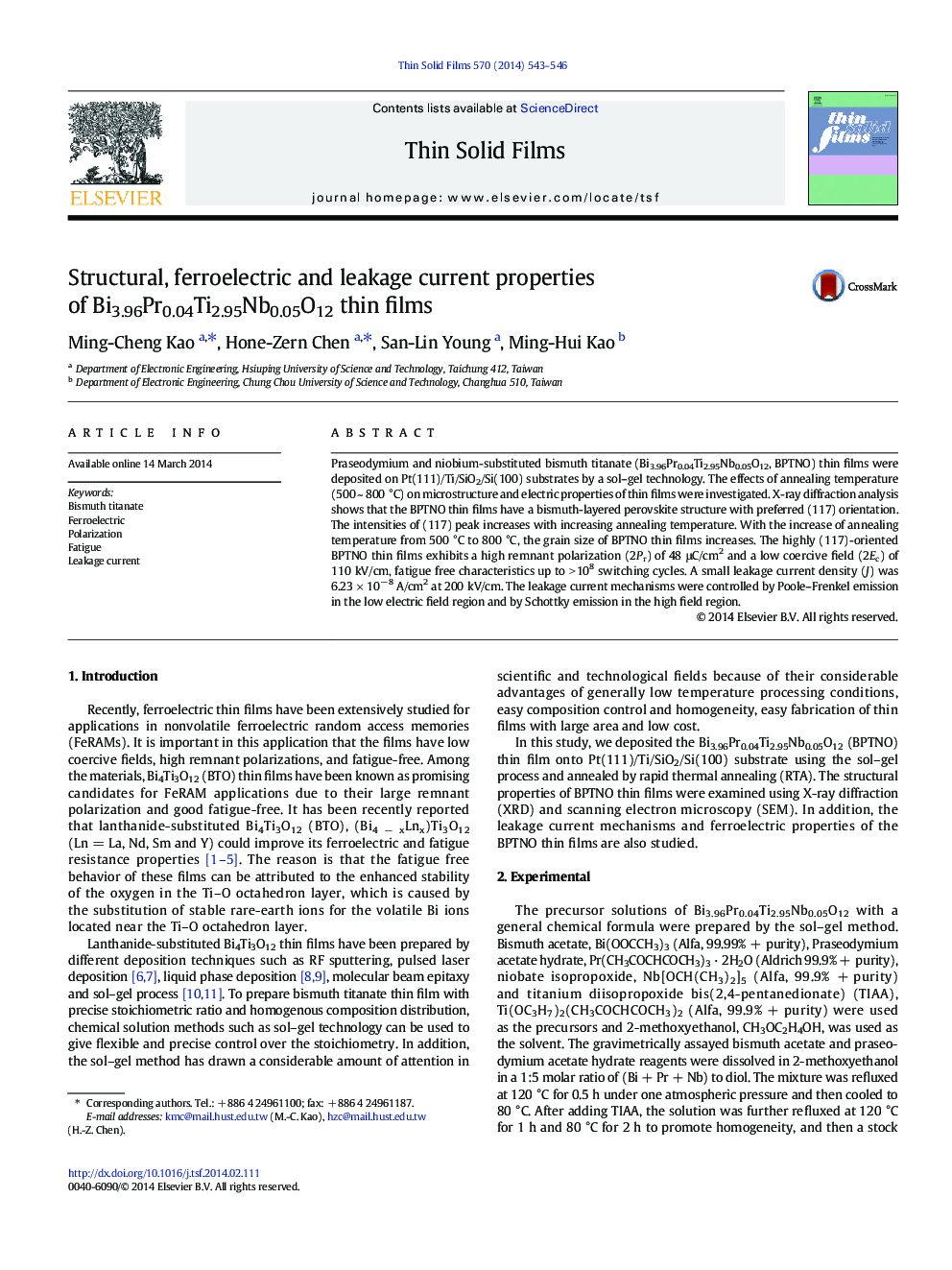| Article ID | Journal | Published Year | Pages | File Type |
|---|---|---|---|---|
| 1664981 | Thin Solid Films | 2014 | 4 Pages |
•Bi3.96Pr0.04Ti2.95Nb0.05O12 thin films were prepared by sol–gel technology.•Films show preferred (117) orientation.•The Pr and Nb-doping decrease the oxygen vacancy concentration.•The Pr and Nb-doping improved the ferroelectric and leakage current properties.
Praseodymium and niobium-substituted bismuth titanate (Bi3.96Pr0.04Ti2.95Nb0.05O12, BPTNO) thin films were deposited on Pt(111)/Ti/SiO2/Si(100) substrates by a sol–gel technology. The effects of annealing temperature (500 ~ 800 °C) on microstructure and electric properties of thin films were investigated. X-ray diffraction analysis shows that the BPTNO thin films have a bismuth-layered perovskite structure with preferred (117) orientation. The intensities of (117) peak increases with increasing annealing temperature. With the increase of annealing temperature from 500 °C to 800 °C, the grain size of BPTNO thin films increases. The highly (117)-oriented BPTNO thin films exhibits a high remnant polarization (2Pr) of 48 μC/cm2 and a low coercive field (2Ec) of 110 kV/cm, fatigue free characteristics up to > 108 switching cycles. A small leakage current density (J) was 6.23 × 10− 8 A/cm2 at 200 kV/cm. The leakage current mechanisms were controlled by Poole–Frenkel emission in the low electric field region and by Schottky emission in the high field region.
